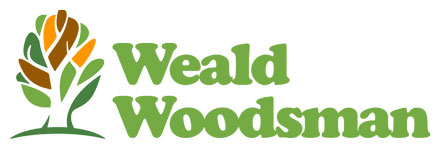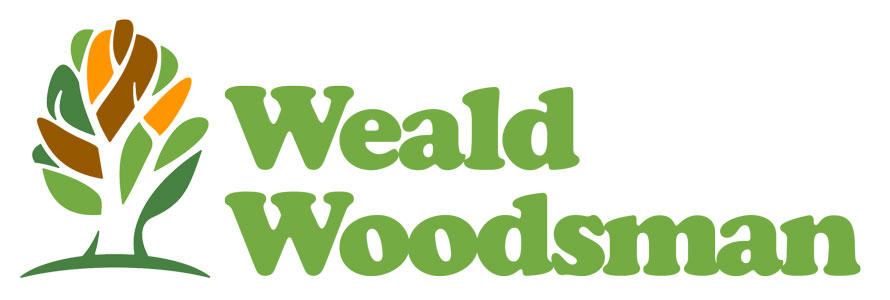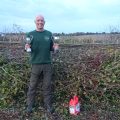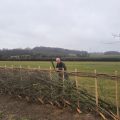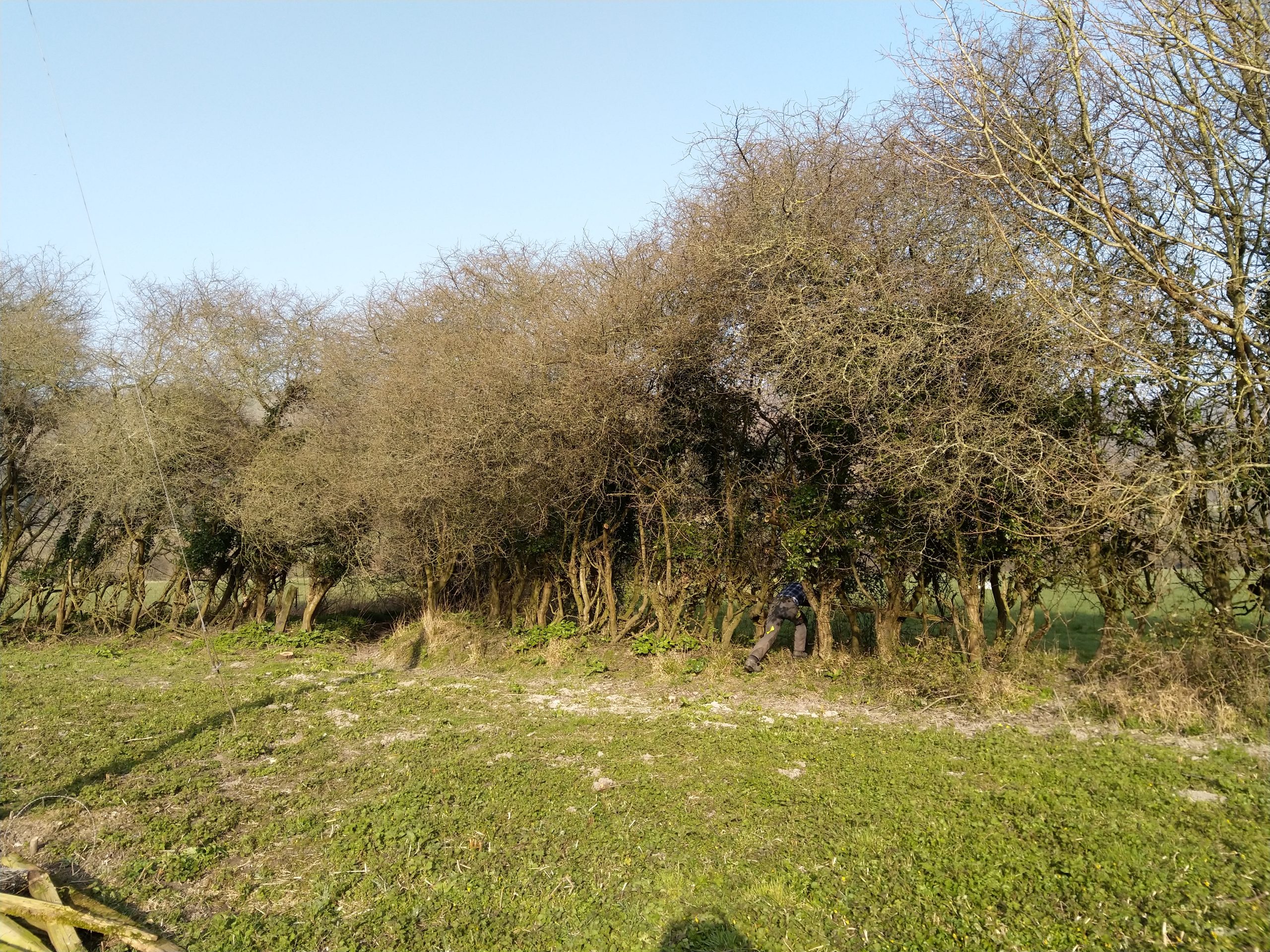
Towards the end of March, I was persuaded to undertake a hedgelaying job at the foot of the South Downs in Sutton, near Petworth, Sussex. The end of the season was drawing close and I was concerned that I might not be able to source the necessary stakes and binders for the job. However, that was a mild consideration compared to the scale of the job in hand.
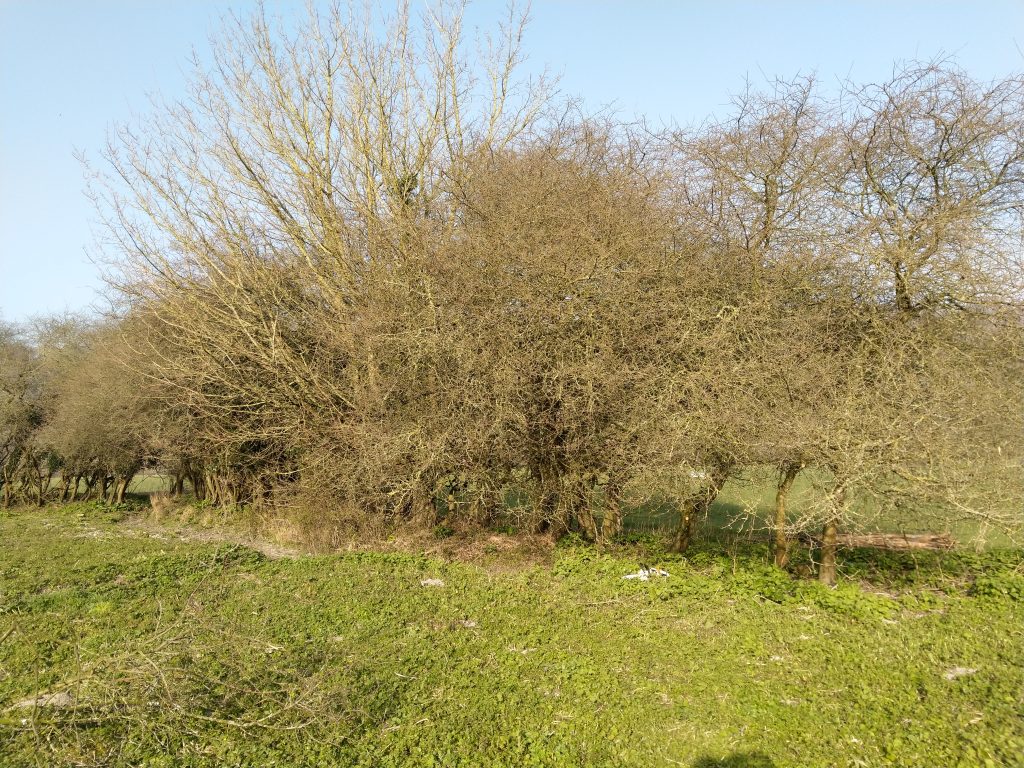
The hedge was only 46 metres in length but to say it was a beast was an understatement! Consisting almost entirely of Bullace (Wild Plum), there was also a multi-stemmed field maple tree to deal with as well. The Bullace stems were all long, leaning, and ‘leggy’, with all their crowns intermingling with each other; effectively they were a line of trees rather than a hedge. Add to that the remains of a two strand barbed wire fence running through the bottom, and it was clear that I was going to need some assistance.
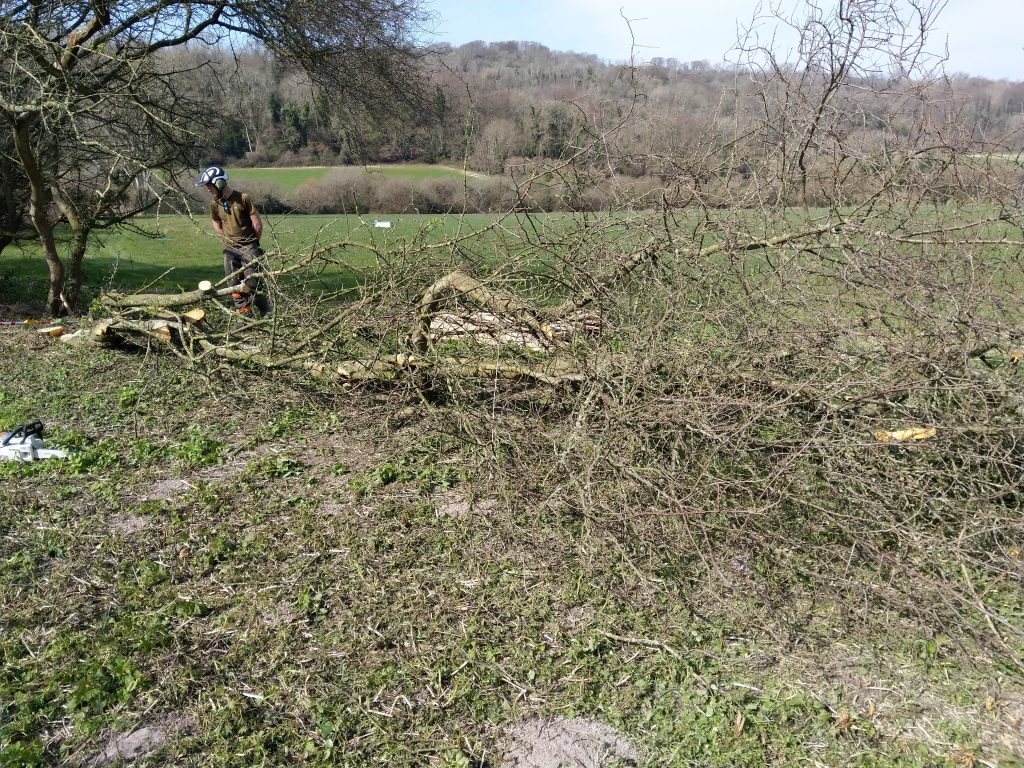
I had already enlisted the help of my friend Benjamin Jennings who is a forester in his own right, and who is also very interested to learn hedgelaying. After clearing out the old fencing we started laying the hedge in earnest. Despite being top heavy, the Bullace stems pleached very well, the timber behaving much the same as blackthorn.
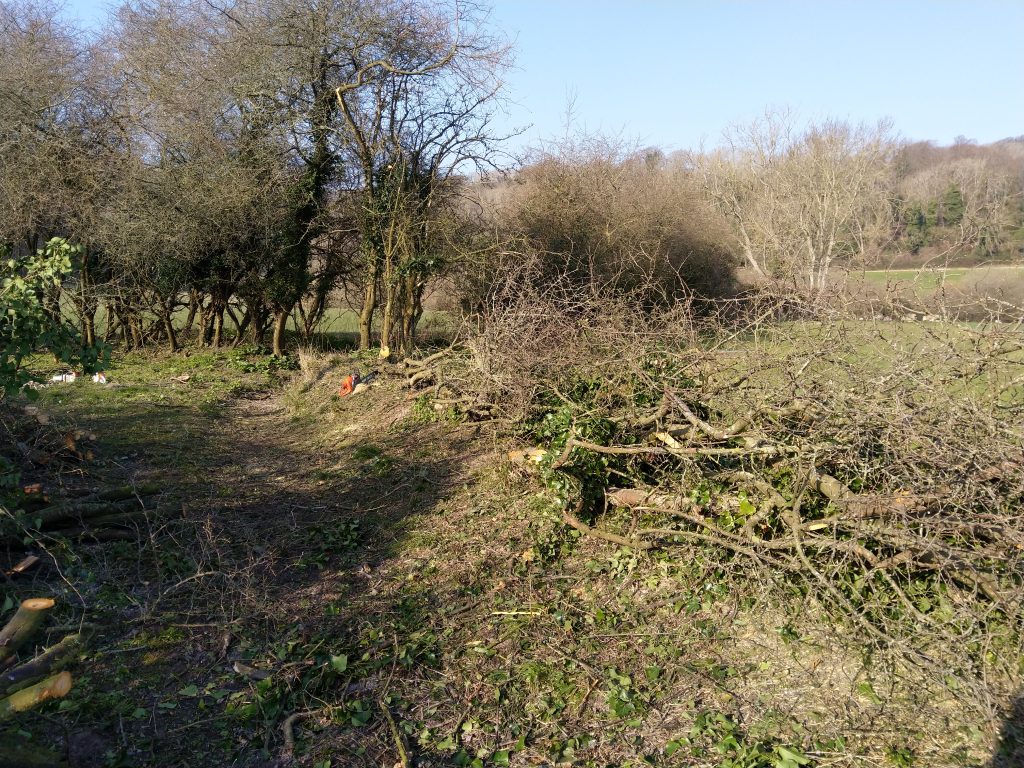
A couple of days in and we had half of the hedge down. We had to employ all the tools in our armoury to do the work, including a high reach pole-saw to untangle the canopy as we went. Needless to say we also produced a huge pile of brash, which I had previously warned the landowner would happen.
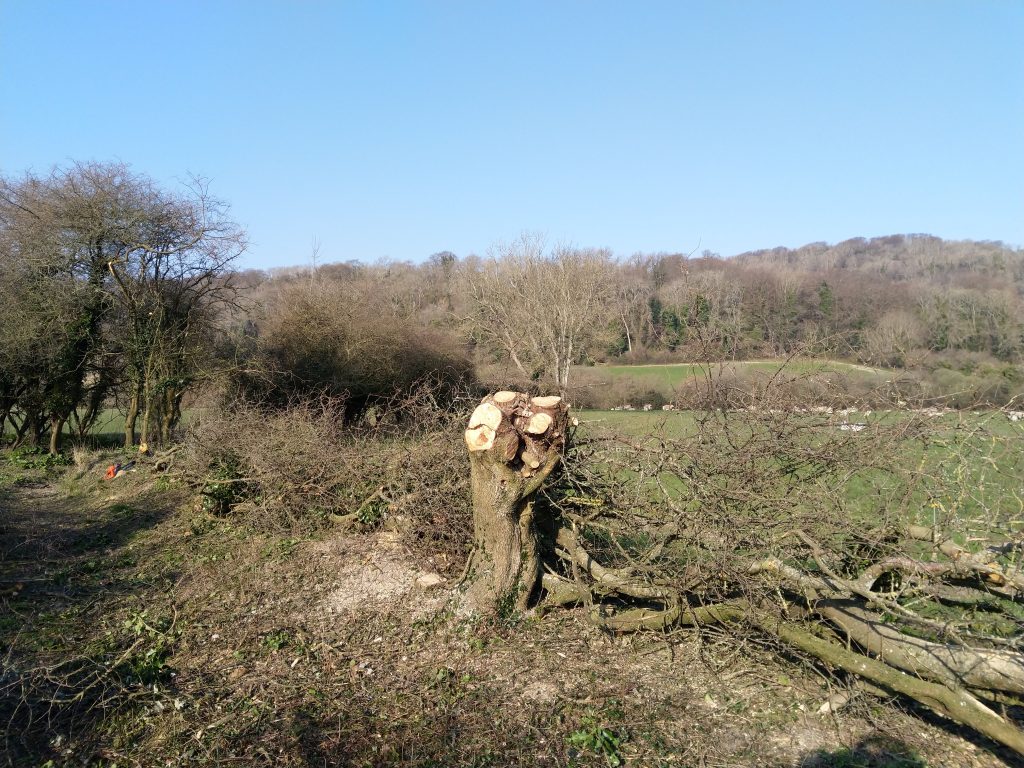
The field maple was actually growing off the line of the hedge and was far too big to lay so we decided to pollard it as a feature tree. This also has the advantage of making it easier to manage in future years.
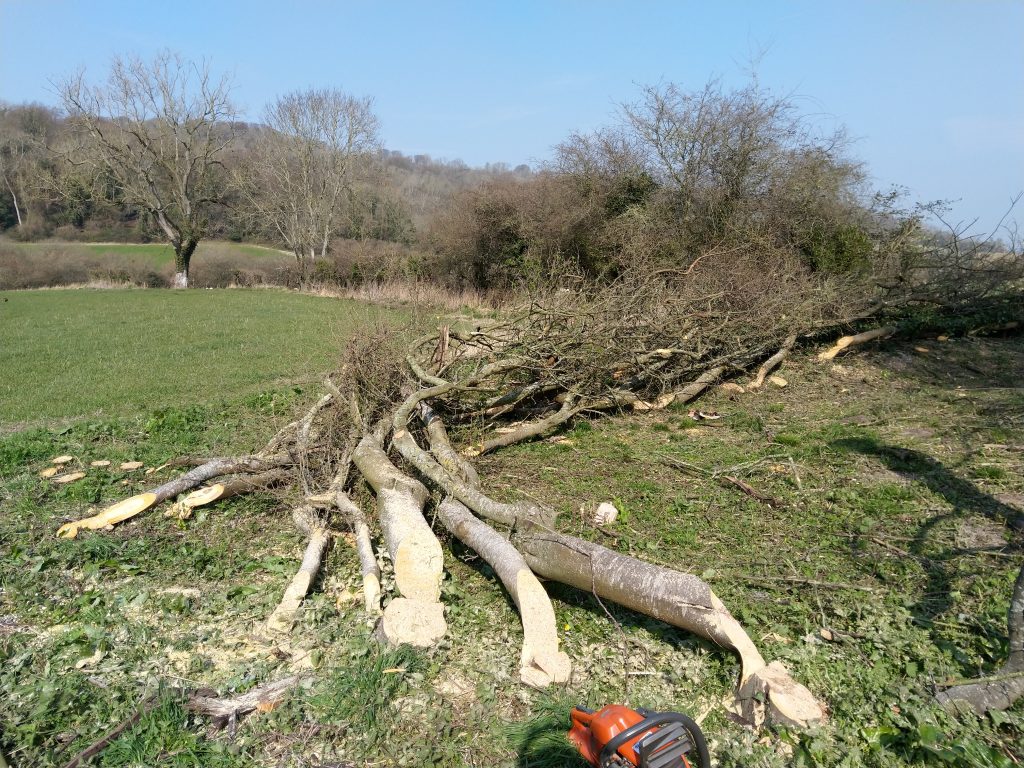
By lunchtime on day four, we had laid the final stem. Because of the way the hedge had originally been planted, the far end had a really nice curve on it and I was able to incorporate this into the laid hedge as a nice feature.
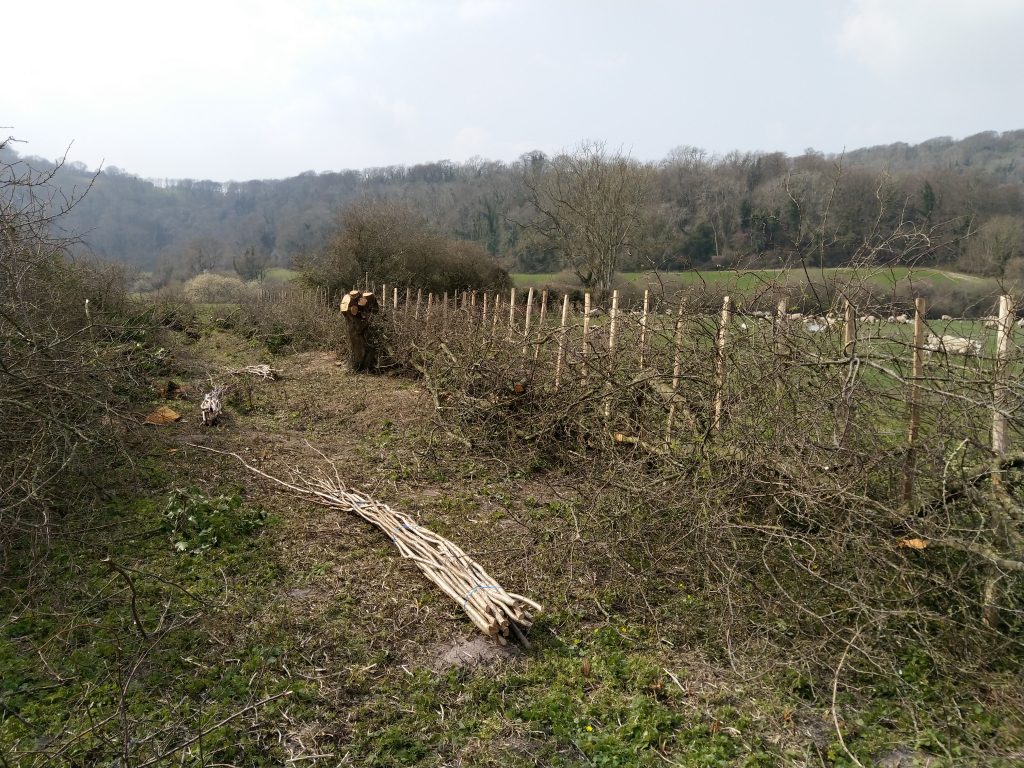
Then it was on to the staking and binding. I had got a load of chestnut stakes that were left over from the South of England Hedgelaying Championships the previous month, plus I had bought a load more in from my good friend Paul Matthews, so I knew the quality was going to be good.
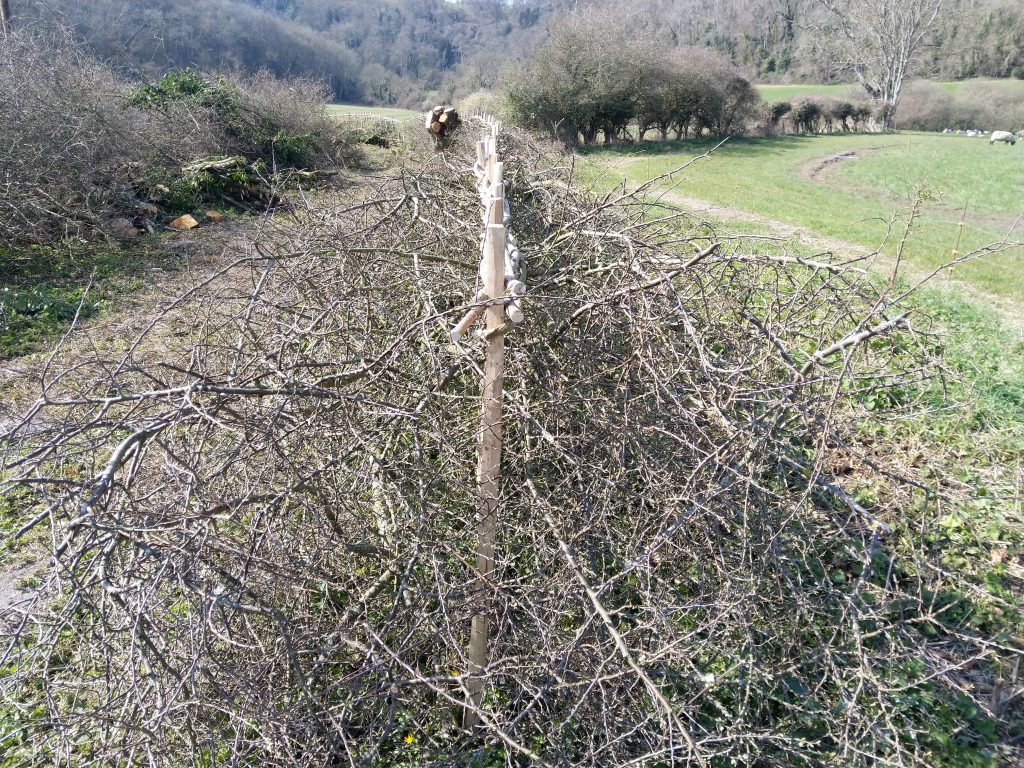
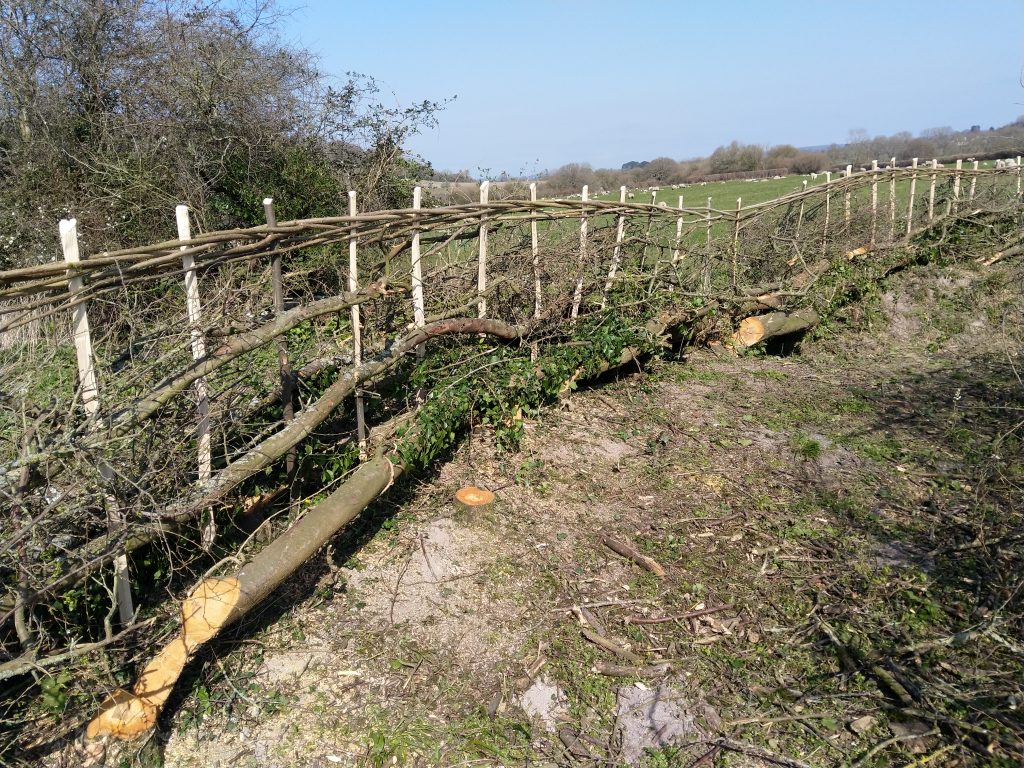
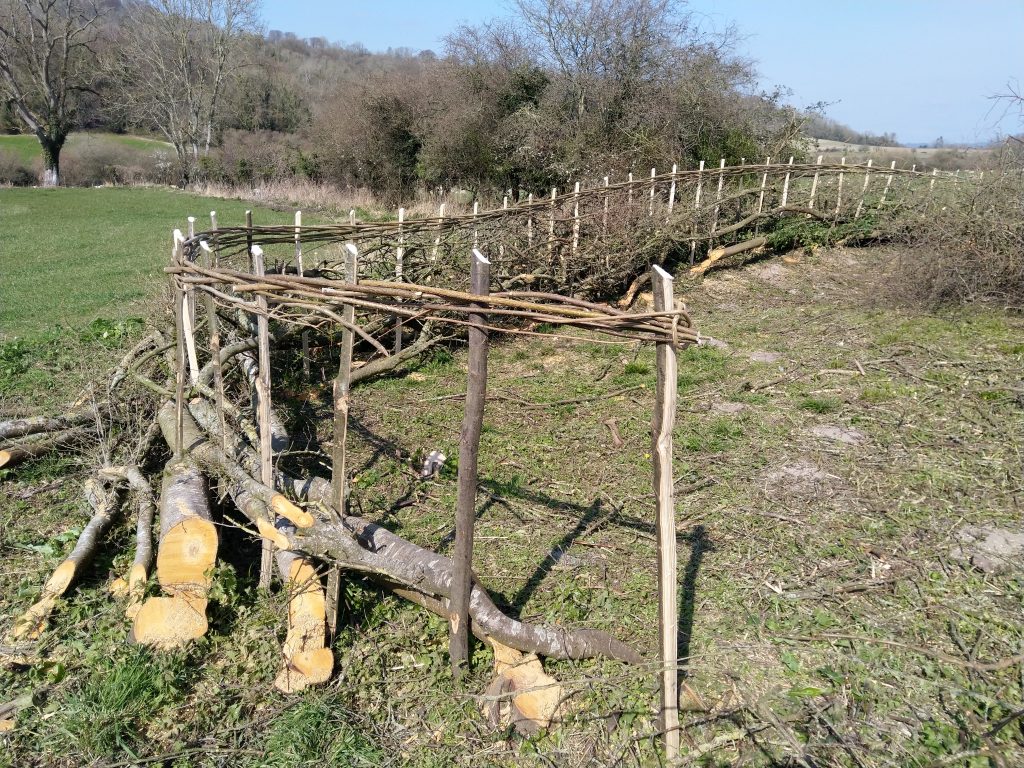
With the binding complete it was time for the trimming up and a few finishing touches before we could stand back and admire our work.
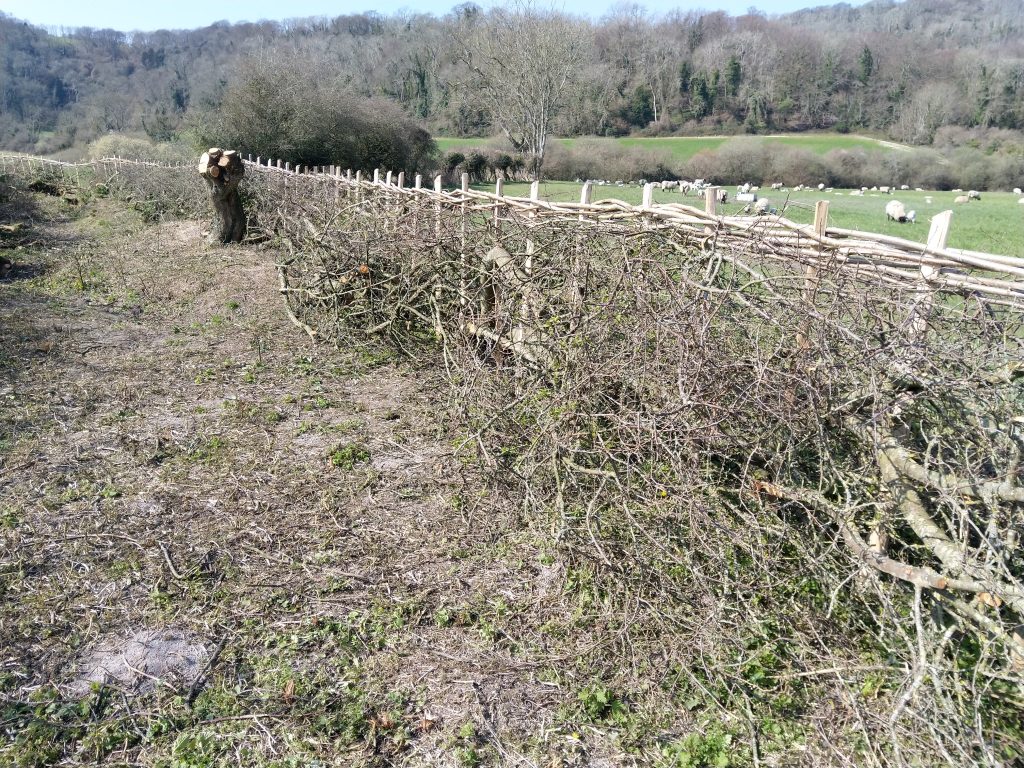
However, there was still the small matter of the brash pile and how we were going to deal with it.
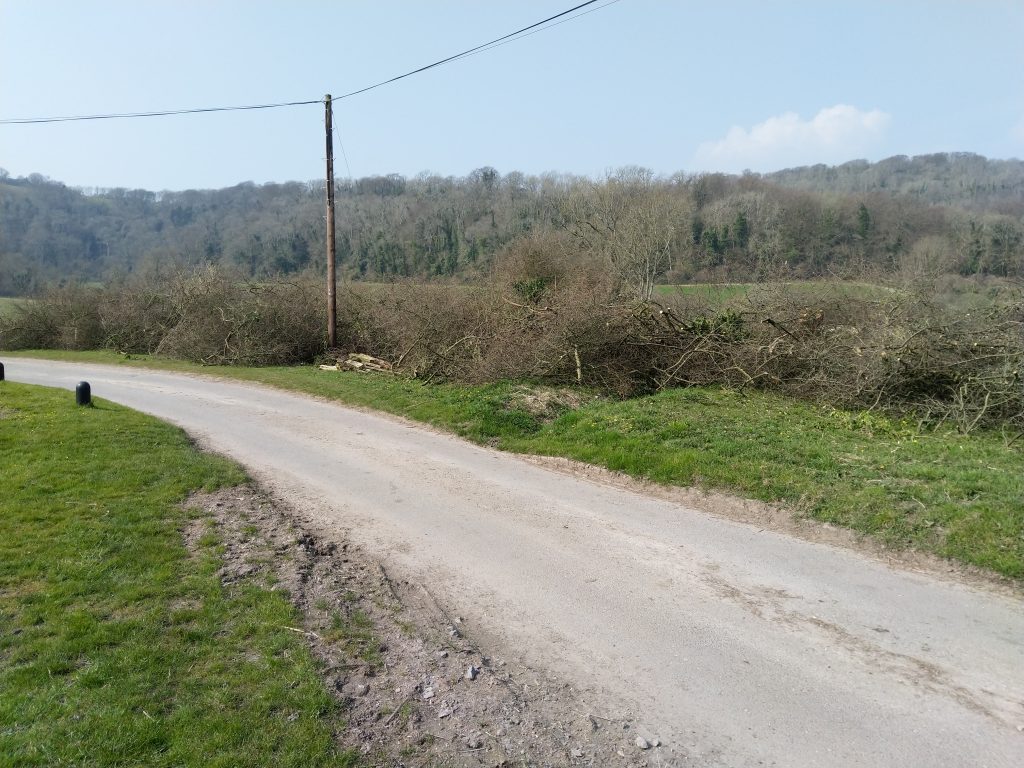
The pile extended the full length of the hedge and in fact you can’t see the laid hedge in the photo above. We couldn’t burn the brash because of a thatched barn adjacent, plus there was an overhead phone wire above the pile.
Benjamin however, had a plan…
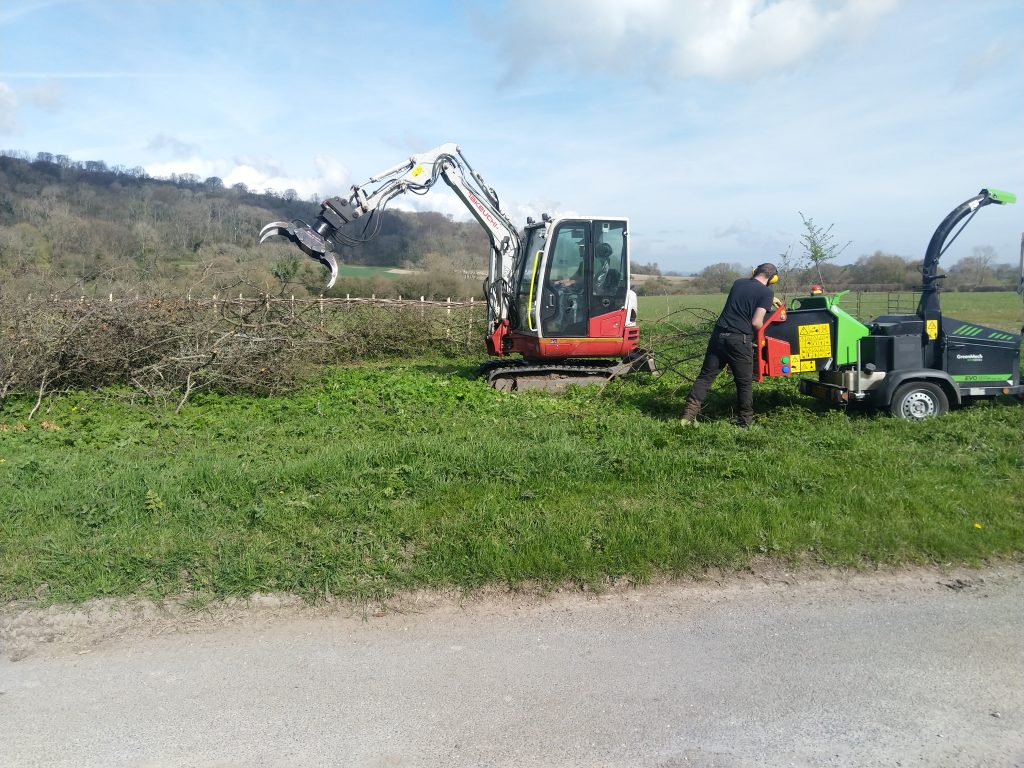
Enlisting the help of one of his associates, the brash was chipped and removed from site. Benjamin used the digger and grapple to separate the brash to make it easier to feed into the chipper.
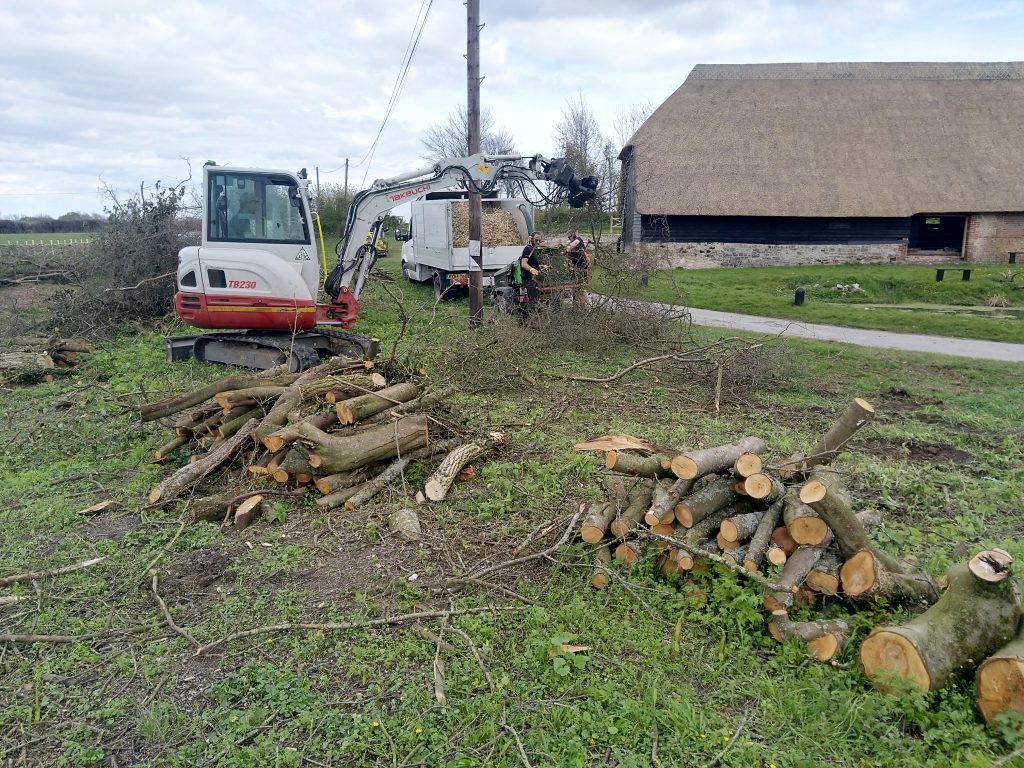
The landowner was keeping the logs for his wood burner, so only the smaller brash had to be chipped. To say this method was efficient is an understatement; the lads had that huge pile all chipped by early afternoon!
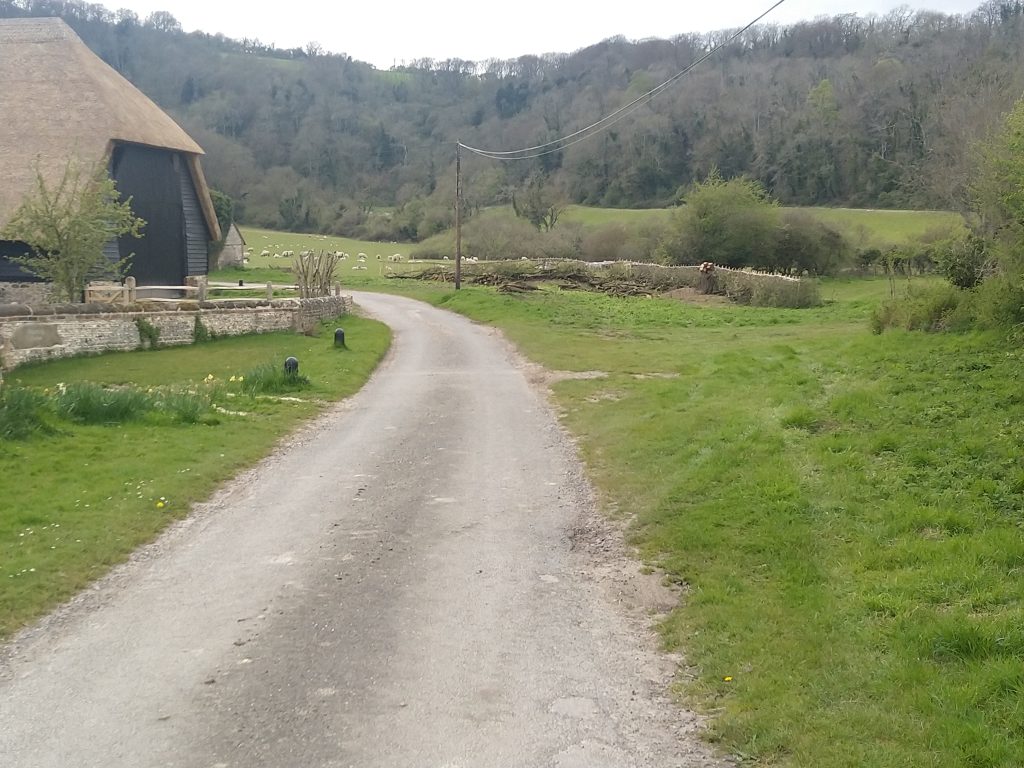
With the brash gone, we could finally appreciate the finished result. From an overgrown beast of a hedge to a rejuvenated, laid hedge in four and a half days, plus half a day for the chipping. It had been an epic challenge, but very rewarding at the same time and it’s always good to know that you are improving the quality of the habitat as well as giving the hedge a new lease of life. Needless to say the landowner was delighted with the work too.
I must take this opportunity to thank my friend and willing helper Benjamin Jennings of Jennings Forestry for all his assistance and patience during this work. Without him, it would have been a biblical task.
